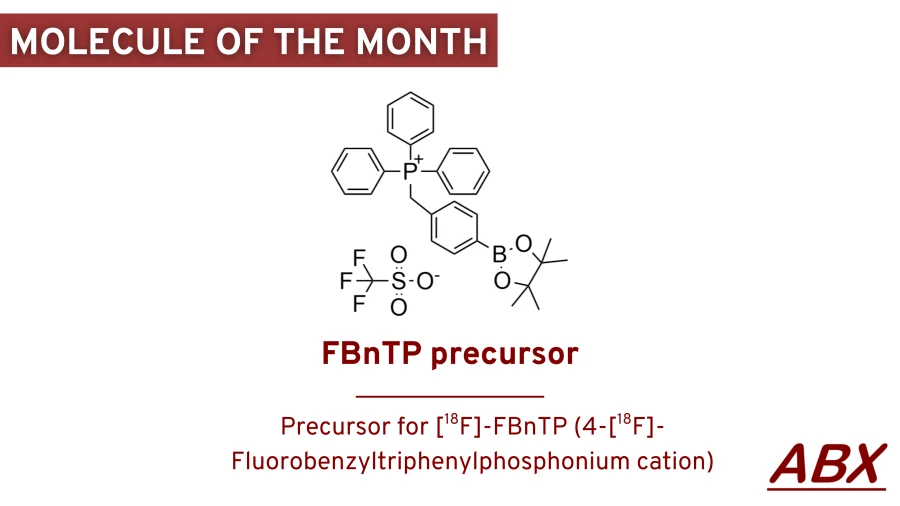Mitochondrien sind wichtige Regulatoren der zellulären Energie und des Stoffwechsels und spielen eine entscheidende Rolle bei zahlreichen Erkrankungen, darunter Krebs und Herzkrankheiten. Sie erzeugen ein Membranpotential, das die für die ATP-Synthese benötigte Energie bereitstellt [1].
Das 4-[18F]-Fluorbenzyltriphenylphosphonium-Kation ([18F]-FBnTP) ist eine positiv geladene, lipophile Verbindung, die als negativer Membranpotential-gerichteter PET-Tracer für die Myokard-Perfusionsbildgebung (MPI) verwendet wird [2].
Der Precursor (ABX Prod.-Nr. 7058) zur Herstellung von [18F]FBnTP über eine kupfervermittelte Ein-Schritt-18F-Fluorierungsreaktion sowie die entsprechende Referenzverbindung (ABX Prod.-Nr. 7059) sind für Forschungs- und Entwicklungszwecke erhältlich.
[1] Mitchell, P. Evidence discriminating between the chemical and the chemiosmotic mechanisms of electron transport phosphorylation. Nature 1965, 208 (5016), 1205–1206.
[2] Zhang, Z. One‐step synthesis of 4‐[18F]fluorobenzyltriphenylphosphonium cation for imaging with positron emission tomography. J. Label Compd. Radiopharm 2016, 1–5.
Das 4-[18F]-Fluorbenzyltriphenylphosphonium-Kation ([18F]-FBnTP) ist eine positiv geladene, lipophile Verbindung, die als negativer Membranpotential-gerichteter PET-Tracer für die Myokard-Perfusionsbildgebung (MPI) verwendet wird [2].
Der Precursor (ABX Prod.-Nr. 7058) zur Herstellung von [18F]FBnTP über eine kupfervermittelte Ein-Schritt-18F-Fluorierungsreaktion sowie die entsprechende Referenzverbindung (ABX Prod.-Nr. 7059) sind für Forschungs- und Entwicklungszwecke erhältlich.
[1] Mitchell, P. Evidence discriminating between the chemical and the chemiosmotic mechanisms of electron transport phosphorylation. Nature 1965, 208 (5016), 1205–1206.
[2] Zhang, Z. One‐step synthesis of 4‐[18F]fluorobenzyltriphenylphosphonium cation for imaging with positron emission tomography. J. Label Compd. Radiopharm 2016, 1–5.
